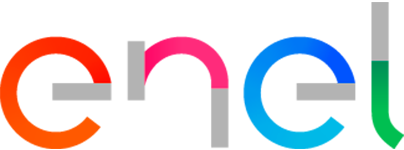CentraRSE and Circular Economy
The Guatemalan Center for Corporate Social Responsibility Action (CentraRSE) is an associative, apolitical, independent, and non-profit organization dedicated to promoting CSR in the Central American country and fostering ethical corporate practices, conscious capitalism, and sustainability. It has 18 years of experience working with companies and the political sector, promoting sustainable development as an agent of corporate transformation.
During recent years, CentraRSE has increasingly focused on environmental issues, always tied to its strategy which is closely aligned with the objective of promoting actions to meet the United Nations’ Sustainable Development Goals. Based on this interest in driving actions aimed at reducing poverty and mitigating climate change, the organization is very active in creating spaces of dialogue and tools to promote sustainable development and Circular Economy.
CentraRSE defines Circular Economy as a resource leveraging system led by a reduction in the extraction of raw materials, the reuse of materials, and the recycling of waste. It undermines the single-use philosophy so that nothing is lost and to maximize the use of all materials.
How did the Circular Economy Self-Diagnostic Tool come about?
In its effort to promote a transition from a linear economy to a circular one, the organization quickly identified that, in Guatemala, there are no diagnostic tools to allow large and small companies alike to objectively analyze their status quo, or to understand and design better strategies to implement and achieve greater circularity.
To evaluate the status of Circular Economy in the Guatemalan private sector, a self-diagnostic tool was introduced to assess performance in this area. Its objective is to provide a systematized and replicable methodology to objectively evaluate the innovative practices in Circular Economy, the degree of maturity, levels of impact, and scalability. This makes it a useful tool for evaluating, in a traceable and comparable fashion, the different Circular Economy strategies that exist today and are planned for the future.
This is an adaptation of the CEADS Circular Economy Analysis Web Tool (http://www.ceads.org.ar/introduccion/), developed by the Argentine Corporate Council for Sustainable Development (CEADS) within the framework of the agreement signed with the German Cooperation Agency (GIZ). This adaptation was made for CentraRSE within the framework of cooperation among member organizations of the WBCSD network (World Business Council for Sustainable Development). To adapt the tool to the needs of the Guatemalan private sector, CentraRSE promoted a workshop and invited eight companies to participate.
What does the Tool consist of?
The CentraRSE Circular Economy Self-Diagnostic Tool has three concrete objectives: to preserve and improve natural capital, which specifically refers to designing a waste- and pollution-free system; to optimize the use of resources, focused on keeping products and materials in use; and to achieve system effectiveness for the purpose of regenerating degraded systems.
The tool evaluates 6 attributes: Internalization of the Circular Economy, Promotion of Circular Economy, Intensity of Circular Economy, Contribution to the SDGs, Contribution to the National Plan to Combat Climate Change, and Impact of the Circular Economy Agenda. Each of these attributes has several specific aspects that the company must evaluate on a scale from 0 to 5. Upon completing the evaluation, a “spider chart” is automatically generated with a score on the performance in each of the attributes, also issuing a report on the general maturity of the issue within each company.
Since 2020, over 80 companies in Guatemala have applied this free tool to better understand their Circular Economy status and design their plans to more quickly advance towards circularity. The tool can be downloaded at the following link: https://centrarse.org/economia-circular/
Pilot Program Results
In July 2021, CentraRSE published the report prepared by the consultant, Melina Scioli, presenting the results of a pilot study carried out using the self-diagnostic tool. 22 companies across different sectors participated in this pilot program. The report highlighted some key data. 82% of participating companies claimed to know the concept of Circular Economy. However, only 22% confirmed that they had created a training plan to introduce the topic within their organization. While 64% of the companies consulted said they had not implemented any Circular Economy initiatives within their operations, 85% said they would be willing to begin a strategy in the future.
The cases presented by the companies as part of the study consisted mostly of recycling programs, emissions reduction, and strategies to measure and reduce the flows of energy, water, and waste, focused on three pillars of Circular Economy: Recovery of resources, Extension of the product life cycle, and Circular supplies. The study concluded that Circular Economy is still largely unknown by the Guatemalan private sector, but there is interest in learning and introducing it into operations.
According to the results of this pilot study, the following recommendations were made to accelerate transition: 1) offer theoretical training on Circular Economy and sessions to exchange best practices among companies, 2) raise awareness of the Guatemalan Low-Emissions Development Strategy and the NDCs (Nationally Determined Contributions) for Guatemala, 3) disseminate the adapted Self-Diagnostic Tool as a mechanism for familiarization with Circular Economy and its indicators, 4) implement long-term strategies (LTS) in Latin America: opportunities for greater public-private collaboration in the pursuit of a resilient and low-emissions development.
Conclusion
It is clear that many companies in Latin America see Circular Economy as an issue focused primarily on the reduction and reuse of waste. However, it can also be seen that several countries are already adopting a strategic perspective towards circularity, integrating the concept within their business model, starting with the product and service design and not at the end. In this direction, this diagnostic is a tool that represents an initial step towards a general mapping of the companies’ level of circularity and, more importantly, towards taking concrete actions to integrate Circular Economy across the value chain.

